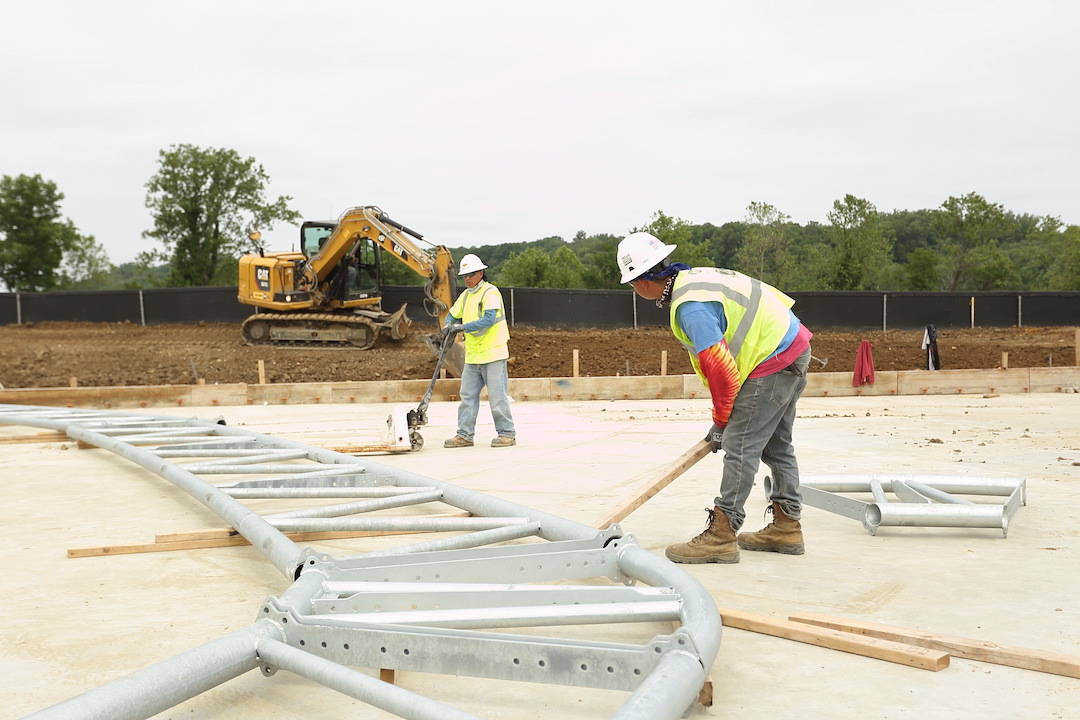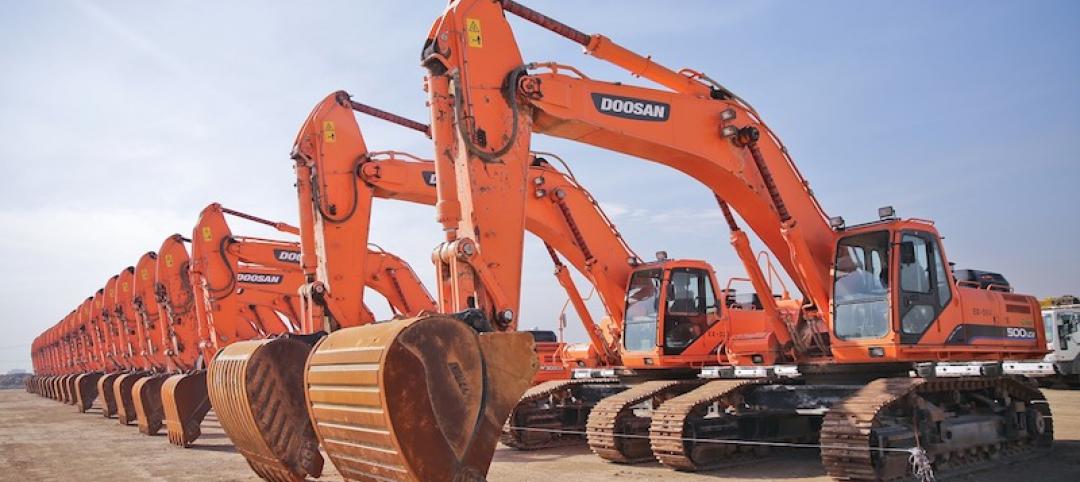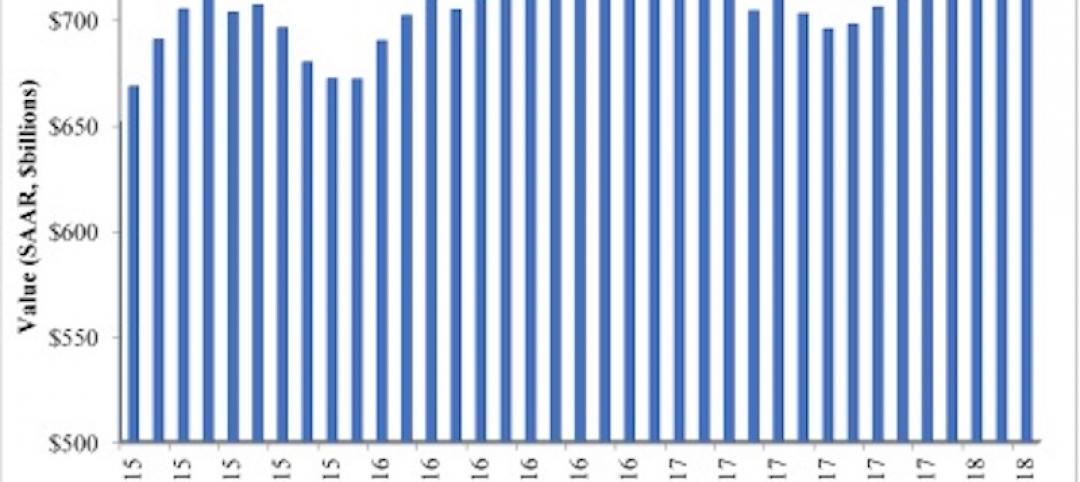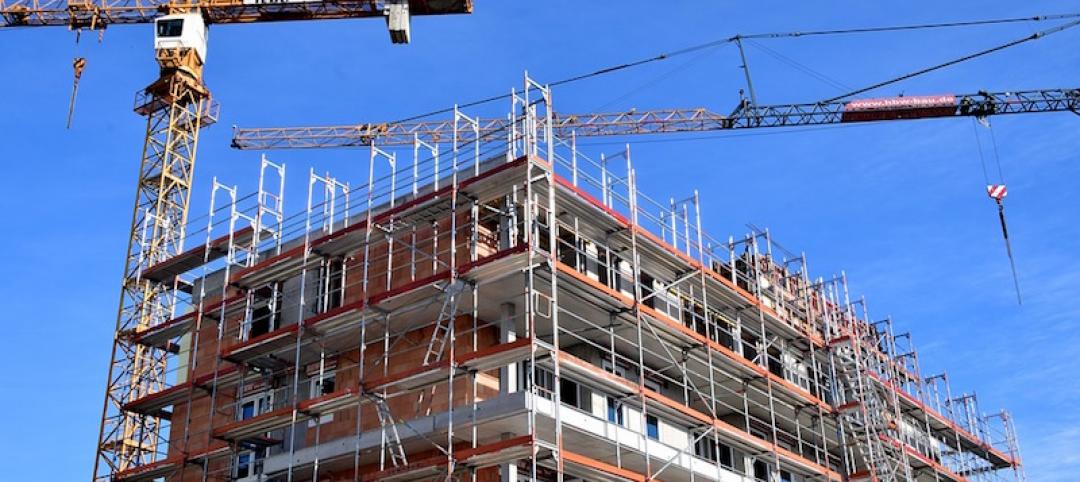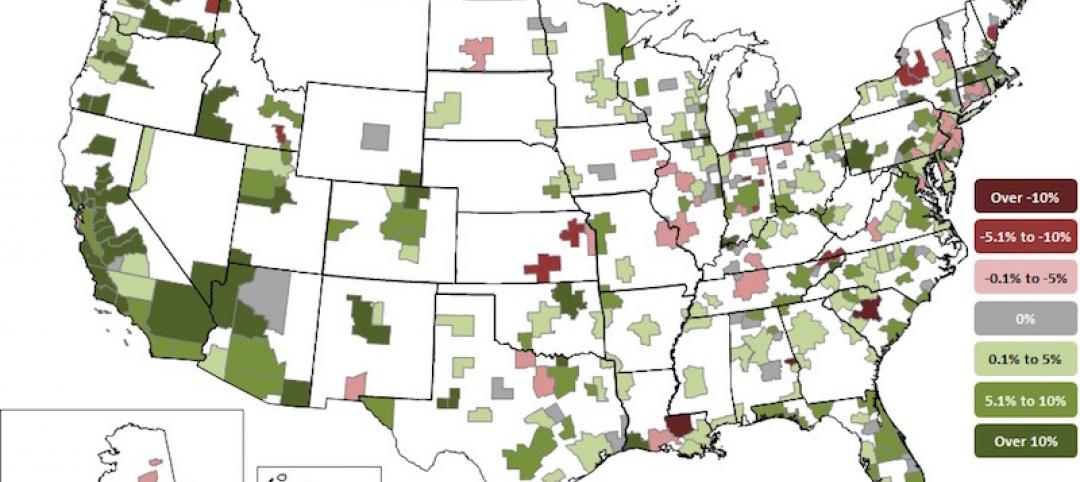Total construction spending was flat between July and August, as a decrease in nonresidential projects offset continuing gains in residential construction, according to a new analysis of federal construction spending data the Associated General Contractors of America released today. Officials urged the House of Representatives to promptly approve the bipartisan infrastructure bill that passed in the Senate earlier this year, noting that spending on infrastructure in the first eight months of 2021 declined from year-earlier levels.
“Nearly every nonresidential spending segment has deteriorated from already inadequate 2020 levels in the first two-thirds of this year,” said Ken Simonson, the association’s chief economist. “Meanwhile, soaring materials costs mean that fixed public budgets buy even less infrastructure than before.”
Construction spending in August totaled $1.58 trillion at a seasonally adjusted annual rate, virtually unchanged from July. Year-to-date spending increased 7.0% from the total for January-August 2020. Gains were limited to residential construction, while nonresidential construction spending slipped in August and year-to-date. The residential construction segment climbed 0.4% for the month and 26% year-to-date. Combined private and public nonresidential construction spending dropped 0.4% compared to July and 6.7% over the first eight months of 2021 compared to same interval in 2020.
Most infrastructure categories posted significant year-to-date declines, Simonson pointed out. The largest public infrastructure segment, highway and street construction, was 3.4% lower than in January-August 2020. Spending on public transportation construction slumped 6.5% year-to-date. Investment in sewage and waste disposal structures climbed 3.8%, while funding for public water supply projects slid 1.8% and conservation and development construction plunged 18%.
Other types of nonresidential spending also decreased year-to-date, Simonson added. Combined private and public spending on electric power and oil and gas projects declined 3.6%. Education construction slumped 10.6%. Commercial construction--comprising warehouse, retail, and farm structures--dipped 1.7%. Office spending fell 10.1% and manufacturing construction edged down 0.8%.
Association officials said the nearly universal decline in infrastructure spending demonstrates the urgency of enacting expanded funding for a range of infrastructure project types. They called on the House of Representatives to quickly pass the Bipartisan Infrastructure bill that already passed in the Senate by a wide margin.
“This legislation includes the kind of policy priorities that members of both parties have long claimed to support,” said Stephen E. Sandherr, the association’s chief executive officer. “There is no excuse for holding these projects hostage while sorting out other priorities. Construction workers, businesses, and the public are all losing from delay in passing this legislation.”
Related Stories
Resiliency | May 17, 2018
Architects brief lawmakers and policy-makers on disaster recovery as hurricane season approaches
Urge senate passage of disaster recovery reform act; Relationship-building with local communities.
Market Data | May 17, 2018
These 25 cities have the highest urban infill development potential
The results stem from a COMMERCIALCafé study.
Market Data | May 10, 2018
Construction costs surge in April as new tariffs and other trade measures lead to significant increases in materials prices
Association officials warn that the new tariffs and resulting price spikes have the potential to undermine benefits of tax and regulatory reform, urge administration to reconsider.
Market Data | May 7, 2018
Construction employers add 17,000 jobs in April and 257,000 for the year
Unemployment rate for construction increases slightly compared to year earlier as higher pay levels appears to be attracting people with recent construction experience back into the workforce.
Market Data | May 2, 2018
Construction employment increases in 245 metro areas between March 2017 & 2018, as trade fights & infrastructure funding shortfalls loom
Houston-The Woodlands-Sugar Land, Texas and Weirton-Steubenville, W.Va.-Ohio experience largest year-over-year gains; Baton Rouge, La. and Auburn-Opelika, Ala. have biggest annual declines.
Market Data | May 2, 2018
Nonresidential Construction down in March, private sector falters, public sector unchanged
February’s spending estimate was revised roughly $10 billion higher.
Market Data | Apr 30, 2018
Outlook mixed for renewable energy installations in Middle East and Africa region
Several major MEA countries are actively supporting the growth of renewable energy.
Market Data | Apr 12, 2018
Construction costs climb in March as wide range of input costs jump
Association officials urge Trump administration, congress to fund infrastructure adequately as better way to stimulate demand than tariffs that impose steep costs on contractors and project owners.
Market Data | Apr 9, 2018
Construction employers add 228,000 jobs over the year despite dip in March
Average hourly earnings increase to $29.43 in construction, topping private sector by nearly 10%; Association officials urge updating and better funding programs to train workers for construction jobs.
Market Data | Apr 4, 2018
Construction employment increases in 257 metro areas between February 2017 & 2018 as construction firms continue to expand amid strong demand
Riverside-San Bernardino-Ontario, Calif. and Merced, Calif. experience largest year-over-year gains; Baton Rouge, La. and Auburn-Opelika, Ala. have biggest annual declines in construction employment.


